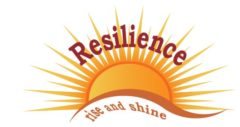I wrote about this experience below at the request of the hospital where I received treatment for pulmonary thrombosis (which means “blood clots in the lungs). While writing it up, I realized how similar this experience has been to my experience of recovering from mental illness. So I decided to share it with you on this blog. By the way, I haven’t entered anything in this blog for several months due to being preoccupied with this condition. Now I’m back!
I’m going to share this experience in chunks so we can look at the similarities step by step. The first step in both has been my willingness to acknowledge that I was not well and needed help. I can see how I used my recovery and resilience skills to stay functional as long as I could.
But there came a point when those skills needed to be redirected to getting me the help I needed. You’ll see how challenging this was as I add more sections to the blog. This step is different for all of us, but there is common ground. Let me know what you think about the similarities.
My Journey through the Pulmonary Thromboendoarterectomy Wilderness to the Promised Land of Deep Breathing
June 30, 2017
I spent the month of May 2016, in Singapore. The weather was extra warm and humid, even for Singapore. I assumed this was why I was having trouble catching my breath. I kept complaining to my associate, Chris, that I was “drowning in the humidity and couldn’t breathe.” I had to stop and rest when we walked just one block up to the grocery store. Catching the bus was even more of a challenge and my traveling companions had to wait for me to catch up. I had mild bouts of shortness of breath before traveling to Singapore, but at the time I explained them away as a sign of aging and didn’t pay much attention to them. Here’s a comment from the UCSD pulmonary patient handbook that explains my experience from a medical perspective.
The human body needs oxygen as an energy source for all of its functions. if the body’s oxygen supply is reduced, the body cannot function efficiently. One of the first indications that the body’s oxygen supply is inadequate is shortness of breath. Because oxygen is used for energy to perform physical tasks, shortness of breath occurs more often with movement or exercise.
I left Singapore and flew to Pennsylvania mid-month for a conference where I was presenting a workshop. I thought my breathing would return to normal once I was out of the heat and humidity. It didn’t. My ankles were swollen and I was still out of breath throughout the conference. I remember gulping for air during my presentation. Even in the face of this evidence, I was sure I would be fine soon and probably just needed a little rest. On the flight back to Singapore I struggled to make it through the airport during a plane change. I could barely walk or breathe. I had to stop after every few steps and rest. The usual signs of blood clots (extreme swelling of the legs, chest pains, etc) were not present except for the struggle to catch my breath.
Once back in Singapore I expected to get more uncomfortable due to the heat and humidity. And yes, it was even more uncomfortable than I had expected. Finally I had the courage to suspect something more than just the weather was happening to me. My denial held up though and my expectations of being “just fine” once home gave me the strength to override the fears that hadn’t surfaced yet.
(more later)
